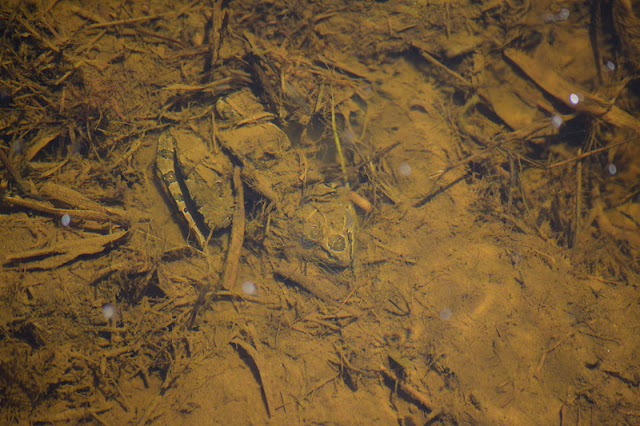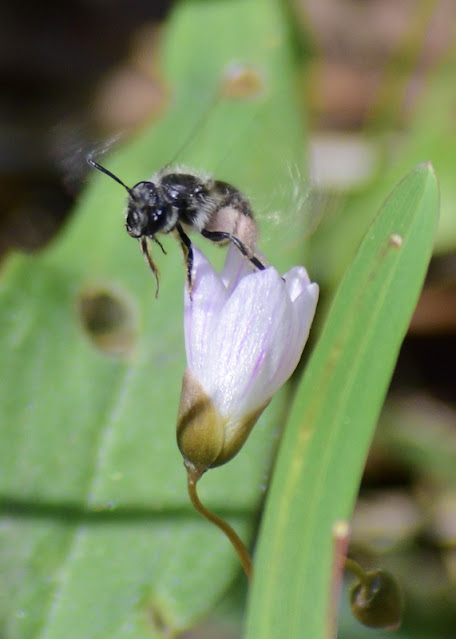Mobbs Spring 2021 Bioblitz: I participated on May 13, from 9am to 3pm, and photographed 101 observations covering 49 species.
My favorites:
Genus Andrena, a member of Mining Bees Family Andrenidae, solitary ground-nesting bees. What I like most about this observation is the coloration presumably from the pollen attached to the bee.
I like how the yellow from the dandelion is reflected upon the silvery blue ( Glaucopsyche lygdamus) butterfly in these photos.
 |
| Oil Beetle, genus Meloe. Ferocious looking. Glad I am not of equal size when I meet up with it. |
 |
| Common Garter Snake (Thamnophis sirtalis). I like the color of this snake and was impressed with its brave pose given my formidable size compared to this relatively small snake. It did not seem to want to give way or step aside to let me pass on the trail. |

The texture, shape, and color of leaves can be quite appealing particularly when observed closely.
Of course, it goes without saying, there is almost always cuteness in the woods and fields.

I nearly missed this Pickerel Frog (Lithobates palustris). Oftentimes I will spot the tiniest of movements, and sometimes think what I viewed moving was only a piece of plant material blowing in the wind, only when I go to touch it, the Insecta flies away making me wish I had taken a photo first then checked to see if it was plant or animal. In this instance, I gently fanned the water to remove just a small bit of soil being used as effective camouflage.
Garden Whites (Genus Pieris) seem to almost never set about landing. And when they do, I seldom get closer than six feet from them before they fly away. I also notice that moths almost always land under leaves, making it difficult to take their photo.
 |
| I try not to personify insect's behavior, however, this Eastern Pine Elfin (Callophrys niphon), as well as the bird below, seems to be telling me something with the way they are looking at me, wouldn't you say? |
Wood Thrush (Hylocichia mustelina)
This yellow trout lily or yellow dogtooth violet (Erythronium americanum) is a spring ephemeral, one of a handful of ephemerals I observed and enjoyed for their delicate yet determined nature. They must utilize the sun before the trees and new leaves rob them of light.
What will you observe on your Mobbs walk? There are so very many species of life surrounding us, particularly in preserved areas like Mobbs where the interactions of plants and animals are allowed to function as nature intended. We only need to use our senses to appreciate the many life forms, their beauty, and their behaviors.
View more Mobbs Bioblitz observations posted by a number of folks at this link.
Bernie
Observing life in nature.
Connecting native habitat, wildlife, and community.
Backyard (informal) BioBlitz and beyond. May, 349 observations on our 1.3-acre yard; 133 species.
View them all on iNaturalist at this link.
Which one is your favorite and why?
















No comments:
Post a Comment